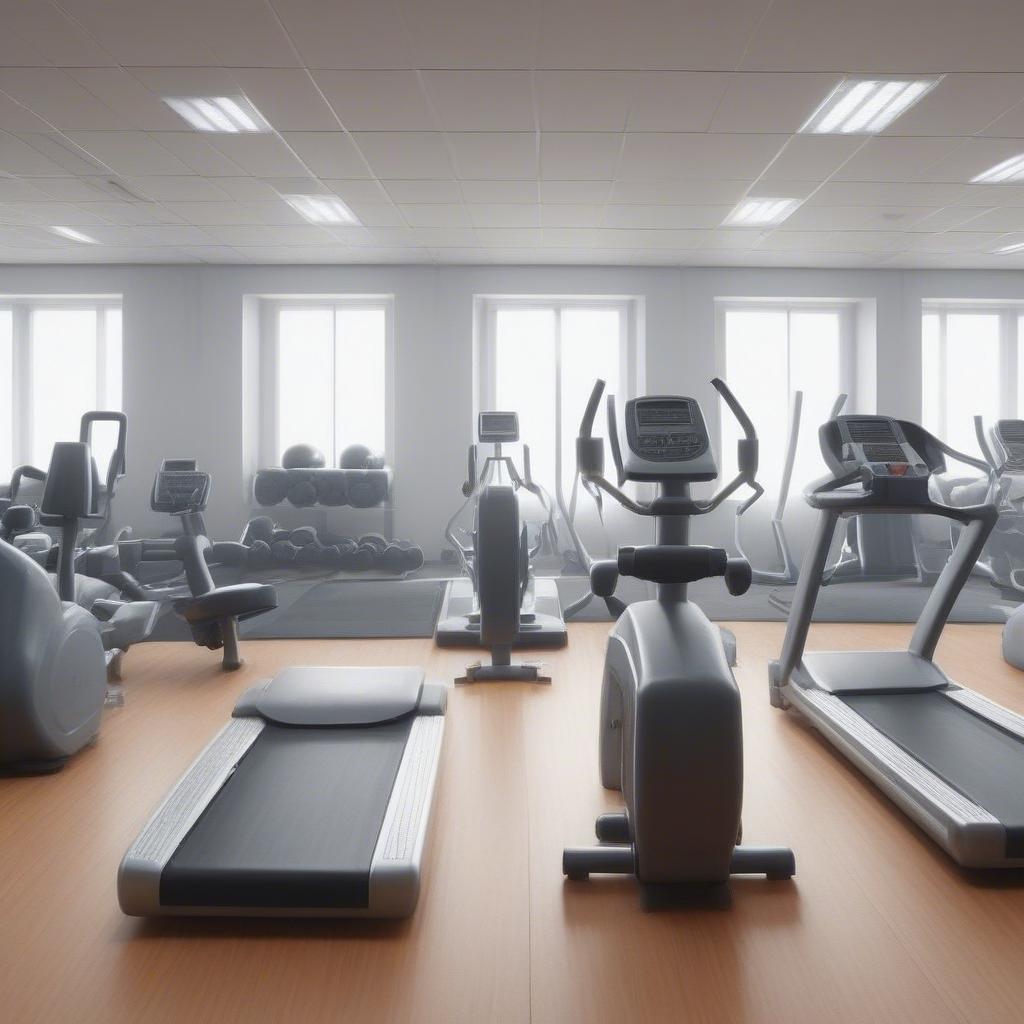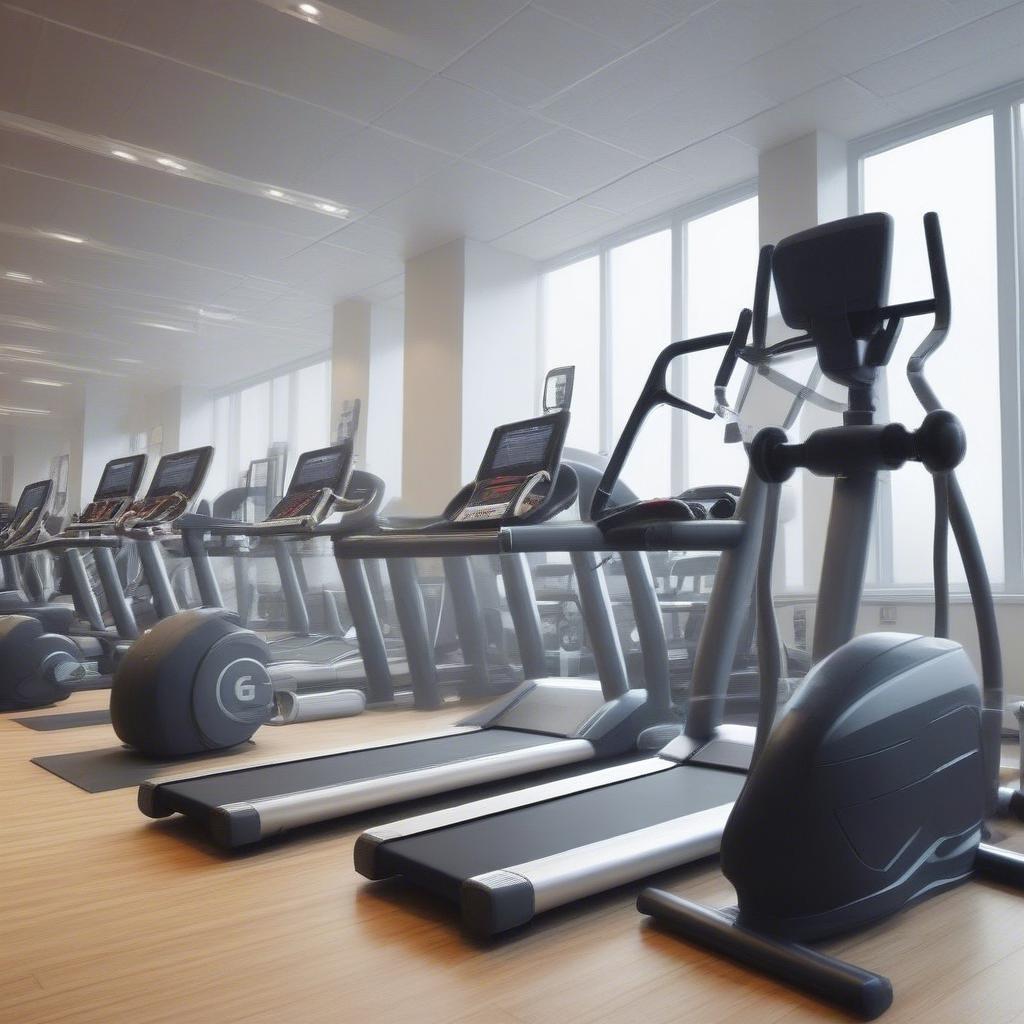
Navigating the world of gym compliance can feel like trying to bench press a truck – heavy and overwhelming. But just like proper form is crucial for a good workout, understanding fitness safety laws is fundamental for a thriving, safe gym environment. This article breaks down the essential aspects of health and safety, turning this complex topic into digestible, actionable insights for your business safety and success.
The Vital Importance of Gym Safety
Why sweat the details of health and safety? Because it’s not just about ticking boxes; it’s about creating a haven for your members – a place where they can focus on their well-being, not their worries. Think of safety protocols as the spotter for your gym, providing support and protection.
Beyond the Legalities: The Human Impact
Imagine a member slipping on a poorly maintained floor, or suffering an injury due to faulty equipment. The physical pain is one thing, but the emotional toll – the loss of trust, the anxiety about returning – can be even more damaging. A robust safety system shows your members that you value their well-being as much as their business. This fosters loyalty, builds a positive reputation, and ultimately, fuels your gym’s success.
The Bottom Line: Protecting Your Business
Failing to adhere to fitness safety laws can open your business to a range of legal and financial repercussions. Lawsuits, fines, and reputational damage can quickly drain resources and destroy all that you’ve worked hard to build. A proactive approach to health and safety is not an expense; it’s an investment in your gym’s longevity and stability.
Key Health and Safety Regulations
Understanding the landscape of gym compliance starts with grasping the core regulations. These are the building blocks of a safe environment for your staff and members.
Risk Assessments: The Foundation of Safety
A risk assessment is not just a formality; it’s your roadmap to identifying, evaluating, and controlling potential hazards within your gym.
What is a Risk Assessment?
Essentially, it’s a systematic process where you look for anything that could cause harm. This includes:
- Physical Hazards: Damaged equipment, slippery floors, poor lighting.
- Biological Hazards: Bacteria, viruses, and other pathogens from shared equipment.
- Ergonomic Hazards: Poor workstation setups, awkward lifting procedures.
- Chemical Hazards: Cleaning supplies, disinfectants.
How to Conduct a Risk Assessment: A Step-by-Step Guide
- Identify Hazards: Walk through your gym and meticulously note potential risks. Consider every area, from the weight room to the locker room.
- Decide Who Might be Harmed and How: For each identified hazard, think about who could be injured and in what way.
- Evaluate the Risks and Take Precautions: Once you’ve identified the risks, determine how significant they are and what measures can be taken to eliminate or reduce them.
- Record Your Findings: Document the risks, the solutions you implemented, and the timeframe for completion.
- Review and Update: Risk assessments aren’t a one-time event. Regularly review and update them, especially after changes in equipment, procedures, or regulations.
Example Risk Assessment Table
| Hazard | Potential Harm | Risk Level (Low/Medium/High) | Control Measures | Person Responsible | Completion Date |
|---|---|---|---|---|---|
| Broken treadmill belt | Slip and fall, injury | High | Replace belt immediately, restrict treadmill use | Maintenance Staff | Immediate |
| Slippery floor near showers | Slip and fall, injury | Medium | Install non-slip mats, increase cleaning frequency | Cleaning Staff | Ongoing |
| Incorrect use of weight machines | Muscle strain, back injury | Medium | Provide proper instruction, post signage | Gym Staff | Ongoing |
| Loose weights | Injury to feet | Medium | Provide storage, post signage | Staff | Ongoing |
Equipment Maintenance: Keeping Machines Safe and Sound
Regular maintenance isn’t just about prolonging the life of your equipment; it’s a critical safety measure. Faulty equipment poses a significant risk to your members and staff.
Maintenance Schedule Template:
| Equipment | Daily Check | Weekly Check | Monthly Check | Quarterly Check |
|---|---|---|---|---|
| Treadmills | Check for loose bolts, belt condition, etc. | Inspect motor, test emergency stop. Lubricate belt | Calibrate speed and incline. Check sensors and displays | Thorough inspection by a qualified technician. |
| Weight Machines | Check for wear and tear, loose cables, etc. | Check pulleys, grease moving parts. Check weight stacks are secured. | Ensure all bolts are tight. Inspect for wear and tear of cables. | Thoroughly test all functions. Repair or replace worn parts. |
| Free Weights | Inspect for damage | Check for weight accuracy. Clean and sanitize. | Inspect for damage. Replace or remove from floor if un-useable | Clean, organize, and replace broken weights |
Essential Maintenance Steps:
- Regular Inspections: Conduct routine checks on all equipment.
- Prompt Repairs: Address any issues immediately.
- Log Maintenance: Keep detailed records of all maintenance activities.
- Professional Servicing: Schedule regular servicing by qualified professionals.
Staff Training: Empowering Your Team
A well-trained staff is your first line of defense against accidents and injuries. It’s essential that all team members are equipped with the knowledge and skills to create a safe environment.
Key Training Topics:
- Emergency Procedures: How to respond to accidents, injuries, and other emergencies. This includes CPR and first aid.
- Equipment Operation: Proper usage and maintenance of all equipment.
- Customer Service: Effective communication and conflict resolution skills.
- Health and Safety: Understanding your gym’s specific procedures, protocols, and policies.
Example Training Plan:
| Training Module | Frequency | Duration | Delivery Method | Staff Involved |
|---|---|---|---|---|
| Emergency Procedures | Quarterly | 2 hours | Hands-on, practical training | All staff |
| Equipment Operation and Safety | Monthly | 1 hour | Practical demonstration | New and Current Gym Staff |
| Health and Safety Regulations | Annually | 4 hours | Classroom session | All Staff |
| Customer Service | Monthly | 1 hour | Role Play, practical session | All staff |
First Aid: Being Prepared for the Unexpected
Accidents can happen, even in the most well-maintained gyms. Being prepared with a well-stocked first-aid kit and trained staff is non-negotiable.
What Should Be in Your First-Aid Kit?
- Bandages of various sizes
- Antiseptic wipes
- Gauze pads
- Adhesive tape
- Scissors
- Tweezers
- Pain relievers (e.g., acetaminophen or ibuprofen)
- Disposable gloves
- CPR face shield
Key First Aid Steps:
- Ensure that first-aid kits are easily accessible throughout your facility.
- Train several staff members in basic first-aid and CPR.
- Establish a clear procedure for reporting and documenting incidents.
Cleanliness and Hygiene: A Healthy Environment
Maintaining a clean and hygienic environment is crucial, especially in a space where people are sweating and sharing equipment.
Best Practices for Cleanliness:
- Regular Cleaning Schedule: Create a daily, weekly, and monthly cleaning schedule.
- Disinfecting Equipment: Use appropriate disinfectants to clean all equipment after each use.
- Hand Hygiene: Encourage members to wash their hands or use hand sanitizer regularly.
- Ventilation: Ensure your gym is properly ventilated to reduce the spread of germs.
- Sanitation Stations: Provide readily available wipes, spray bottles and sanitizers through out the gym
- Waste Management: Dispose of waste properly and regularly.
Fire Safety: Protecting Your Premises
Fire safety is not to be ignored. It’s important to have a plan in place to protect your members and staff should a fire occur.
Key Fire Safety Measures:
- Fire Extinguishers: Install fire extinguishers in easily accessible locations and train staff on their proper use.
- Emergency Exit Routes: Clearly mark all emergency exits.
- Regular Inspections: Conduct routine checks on fire safety equipment.
- Fire Drills: Practice fire evacuation procedures regularly.
- Smoke Detectors: Install and maintain smoke detectors.
- Fire Suppression Systems: Have and routinely inspect installed suppression systems, if required.
Legal Compliance: Navigating the Laws
Gym compliance isn’t just about best practices; it’s about adhering to local, state, and national laws.
Understanding Applicable Laws:
- Occupational Health and Safety Laws: These laws outline the basic requirements for workplace safety.
- Building Codes: Regulations regarding fire safety, accessibility, and other building standards.
- Consumer Protection Laws: Regulations designed to protect consumers from unfair or unsafe business practices.
- Privacy Laws: Ensuring the privacy of member information.
- Data Protection Regulations: Handling member’s personal data with compliance
- Accessibility Regulations: Laws to make the facility easily accessible for all members.
Staying Compliant:
- Consult with Professionals: Seek advice from legal experts to fully understand your obligations.
- Stay Updated: Regularly check for changes in regulations.
- Document Everything: Maintain detailed records of all safety measures and procedures.
Putting It All Together: Creating a Culture of Safety
Creating a safe gym environment isn’t just about following rules; it’s about building a culture where safety is valued and prioritized by everyone.
Lead by Example
As a gym owner or manager, your commitment to safety is crucial. Lead by example by adhering to all protocols and encouraging your team to do the same.
Open Communication
Encourage members and staff to voice concerns or report hazards. Create an environment where people feel safe raising issues without fear of retribution.
Continuous Improvement
Safety protocols should be regularly reviewed and updated. Seek feedback from your team and members to identify areas for improvement.
Utilizing Technology
Leverage technology, like gym management software, to manage safety checks, track maintenance schedules, and access records.
How Learn Business Supports Gyms
At Learn Business, we understand that running a gym is demanding, and sometimes navigating the complexities of business safety can feel like an added burden. We’re here to alleviate some of that pressure, providing you with the tools and resources you need to ensure compliance and the well-being of your members and staff.
Tailored Templates and Resources
We provide a library of customizable templates, including:
- Risk assessment templates to help you identify and mitigate potential hazards.
- Equipment maintenance schedules to ensure all your machines are safe and in good working order.
- Staff training checklists to help you develop comprehensive training programs.
- Emergency procedure templates to guide your team during crises.
- Incident reporting forms to accurately record any accidents.
Expert Guidance
Our team of business consultants and safety experts can provide guidance tailored to your specific needs. We can help you navigate the specific fitness safety laws applicable to your location, ensuring you’re fully compliant.
Practical Support
We work with you to ensure you’re up-to-date on the latest health and safety regulations, helping you:
- Implement effective safety protocols.
- Conduct thorough risk assessments.
- Develop robust training programs.
- Maintain accurate records.
Fostering Success
By focusing on safety, you create a more secure environment for your members and staff, which increases member retention and boosts your gym’s reputation. Learn Business is your partner in ensuring your business not only thrives but also provides a safe, positive environment for everyone.
Conclusion
Understanding and implementing health and safety regulations isn’t just about avoiding legal issues; it’s about creating a thriving, trusted, and safe environment for your members and staff. By taking a proactive approach to gym compliance, adhering to fitness safety laws, and prioritizing business safety, you are building a gym that not only promotes fitness but also cares about the well-being of everyone who steps through your doors. The key is to understand, implement, and continually improve your procedures. With resources like Learn Business, you can make this journey less daunting and more manageable. Remember, a safe gym is a successful gym.



Leave a Reply